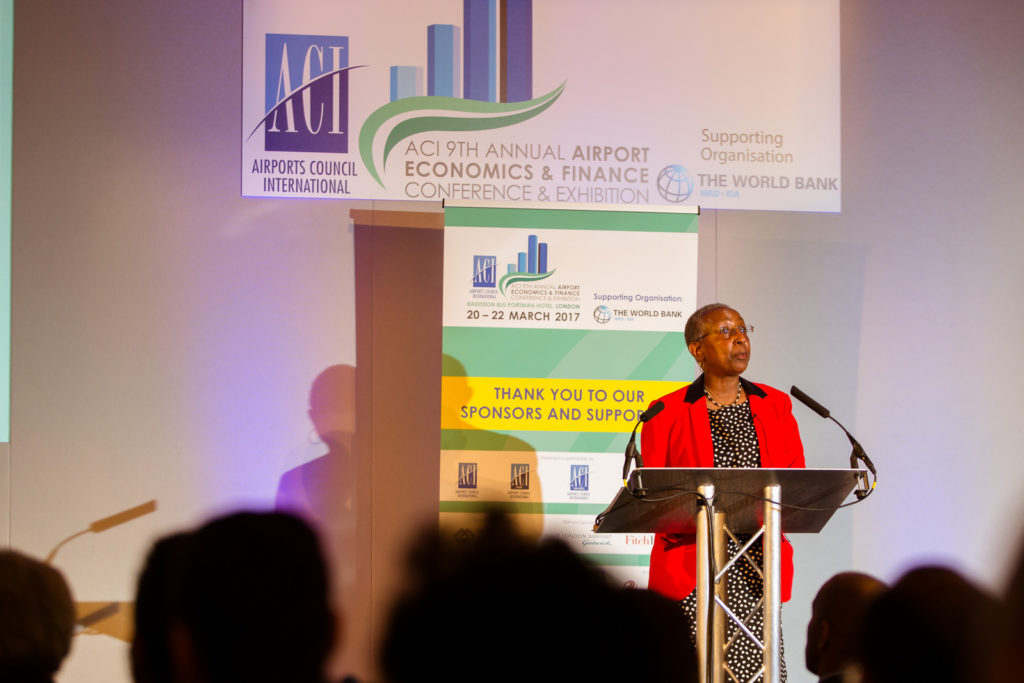The continued recovery in manufacturing and global trade, alongside a rise in business confidence, has fostered investment and growth in airports across the world, according to ACI World’s 2018 Airport Economics Report.
This stability has reinforced the value of the industry for investment, and increased competition continues to shape the industry and its capacity to generate revenues. The report has found that aeronautical revenue generated from airport charges per passenger in real terms has remained stable – in the region of US$10 per passenger.
The report also found that it is undeniable that future growth in air transport demand will come from emerging and developing economies, predominantly in the Asia-Pacific region. In 2016 airports in emerging and developing economies handled 45% of global passenger traffic. By 2040 this share is expected to increase to 62%.
Angela Gittens (above), director general, ACI World, said, “Since 2010, global passenger traffic has been growing at an average rate of 5.5% annually, which is testament to the resilience of the industry. While there are predictions of challenges on the horizon – including inflationary pressures and a protectionist threat in some major economies – passenger traffic has remained on an upward trajectory across the globe in response to demand in both advanced and emerging economies.
“To keep pace with this demand, however, airports must be able to invest, improve and grow. Charges and non-aeronautical revenues are major sources of funds for airports to invest in infrastructure and service improvements. Disproportionate efforts to restrict or regulate this should be avoided, especially considering that airport charges have remained both stable and reasonable in response to the strong competitive pressures that now shape the airport industry.”
Cost and investment
The airport cost structure continues to be characterized by predominantly high fixed costs, necessary for maintaining and operating infrastructure. In 2016 operating expenses made up 64.7% of total costs, the remaining proportion allocated to capital costs.
The potential for non-aeronautical revenues
The report reveals that the structure of airport revenues remained stable over the last six years. While non-aeronautical revenues continue to be an important source of income for airports, most revenues came from aeronautical-related activities. Airports are strongly encouraged to develop non-aeronautical activities and maximize non-aeronautical revenues at their facilities.
Global passenger traffic growth
Airport traffic at world level has grown consistently over the last three years. According to the ACI’s preliminary statistics, passenger traffic posted 6.6 % growth in 2017. Furthermore the Airport Economics Report reveals that passenger traffic continues to follow the rhythm of its own drum, posting annual growth rates above historical averages.
However, to continue serving the needs of this demand, airports must take a long-term view of their business and ensure capacity improvements. Equally important, in this dynamic, competitive environment, airports are forced to set competitive charges, offer incentives and rebates, and invest in quality enhancements to maximize their benefits to effectively follow traffic growth.
Contributors to global trade
In 2016 airport revenues surpassed the US$160bn mark, contributing to GDP. Revenues grew at a rate comparable to growth in passenger traffic – both around 6% – testifying to the stability of unit revenues in real economic terms over time.
To keep pace with the rapid passenger traffic growth in an increasingly commercial and competitive business environment, airports must be able to collect sufficient revenues to finance their investments in airport infrastructure and operations, and to maintain a level of service broadly acceptable to all users.
The Airport Economics Report and the Airport Key Performance Indicators for the 2016 fiscal year are derived from comprehensive data from a sample of more than 900 commercial airports. The publication is a concise snapshot of selected drivers of the world’s airport industry.
To learn more and download a copy of the 2018 Airport Economics Report, click here.

